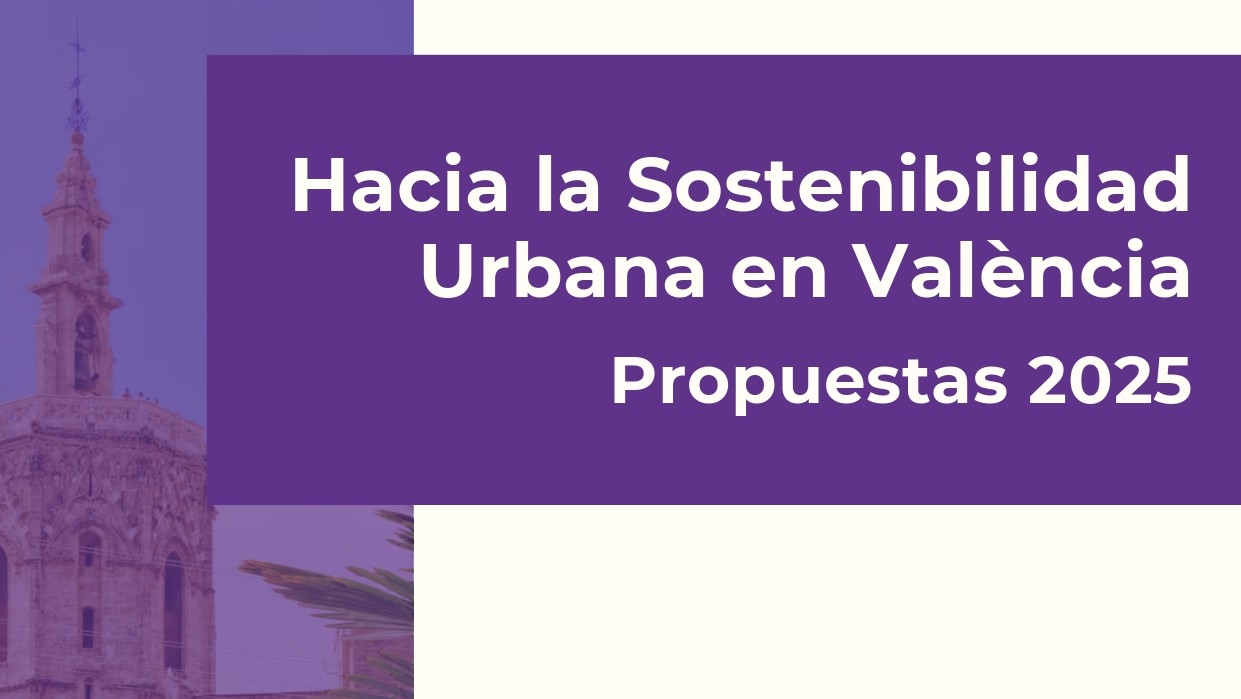
The UPV and the city move forward together in the urban energy transition
Valencia is at a decisive stage in its journey towards climate neutrality. As an EU Mission City, it has strengthened its commitment to cutting emissions, improving air quality and transforming its energy model. In this context, the Urban Energy Transition Chair at the Universitat Politècnica de València (UPV) presents the report “Towards Urban Sustainability in Valencia. Proposals 2025”, a strategic document that brings together recent research, neighbourhood-level analysis, and practical solutions to accelerate decarbonisation.
The report compiles months of multidisciplinary work and offers realistic, scalable and evidence-based measures to support a cleaner, healthier and more resilient Valencia.
A report designed to understand, prioritise and act
The document groups a wide set of strategies around four main pillars:
1. Sustainable food and consumption
Studies in Benicalap and L’Illa Perduda show that more than 70% of emissions originate from Scope 3 — the consumption of goods and services. Food plays a major role, accounting for 24%–30% of total emissions.
Key proposals include:
-
Promoting local markets and low-carbon diets.
-
Reducing food waste.
-
Encouraging reuse of clothing, furniture and appliances.
These actions could cut total emissions by 17%–25% by 2040.
2. Distributed renewable energy and building efficiency
The report recommends progressive installation of solar panels in public buildings, large-scale energy retrofitting and replacing 100% of public lighting with LED technology by 2035.
In Benicalap, photovoltaic systems alone could reduce 33,330 tCO₂, equivalent to 65% of scope 1 and 2 emissions.
Innovative measures, such as building-integrated photovoltaic façades, could cover up to 37% of the UPV campus’s electricity consumption.
3. Sustainable and healthy mobility
Transport remains the largest source of emissions in Valencia (almost 60%). Measures include:
-
Full electrification of the bus fleet by 2040.
-
A 40% reduction in private car use.
-
Strengthened public transport and active mobility networks.
Reorganising parking in Benicalap could save 3,500 tCO₂e per year.
4. Urban nature and climate resilience
Approximately half of the roofs in L’Illa Perduda are suitable for green roofs, capable of absorbing 354 tons of CO₂ annually and enhancing thermal comfort. Scaling this solution across the city would amplify its benefits.
What does this mean for Valencia? A climate-neutral city on the horizon
If fully implemented, the measures in the report could reduce Valencia’s scope 1 and 2 emissions by 84% by 2030. This transformation would also bring cleaner air, lower noise levels, improved energy efficiency and more green spaces across the city.
The report highlights that the energy transition is not only technological, but also social — requiring behavioural changes, governance adaptation, and investment — while offering significant health, environmental, and economic benefits.
The role of the Chair: a space for knowledge and innovation to drive the urban energy transition
The UPV Urban Energy Transition Chair serves as a space for knowledge and innovation that supports progress in Valencia’s energy transition. Through initiatives such as the ETSII Living Lab, neighbourhood-scale assessments, pilot energy communities and photovoltaic studies across the campus, the Chair strengthens the UPV’s position as a reference in research and applied solutions for addressing the city’s climate challenges.
Download the full report
You can explore the full document here:
👉 Download the full report






